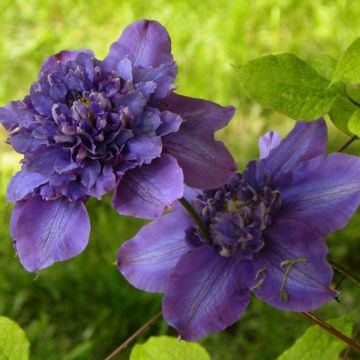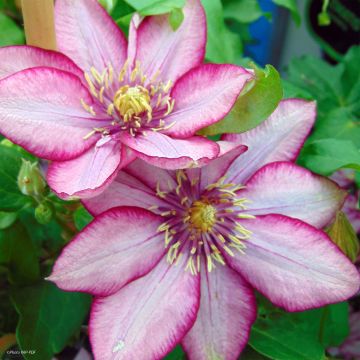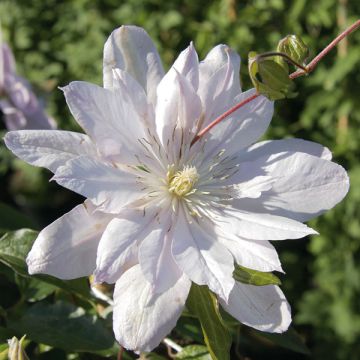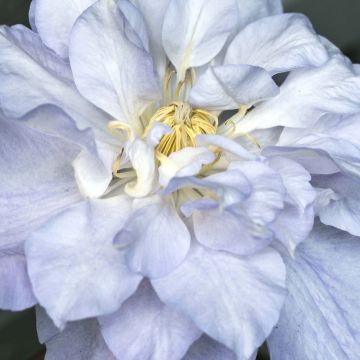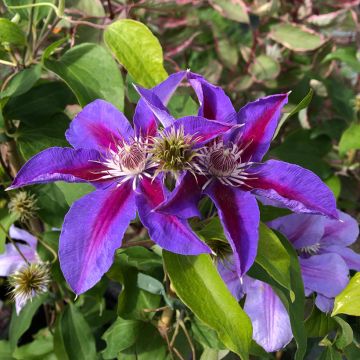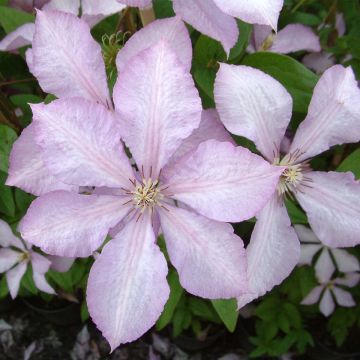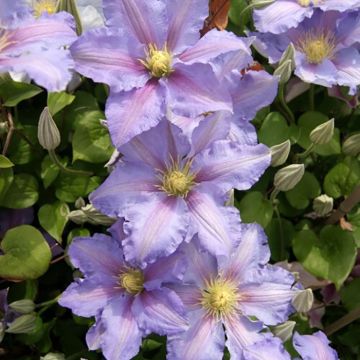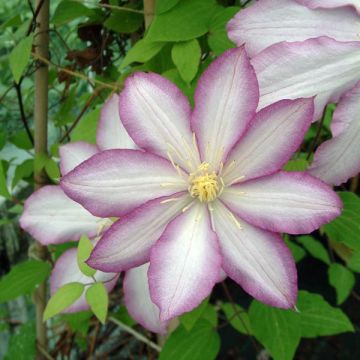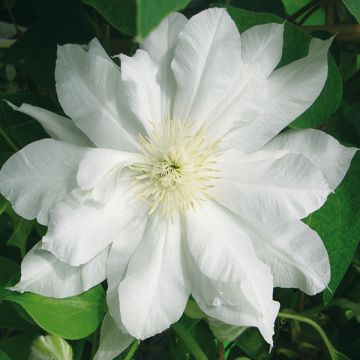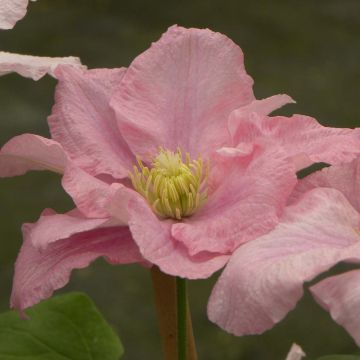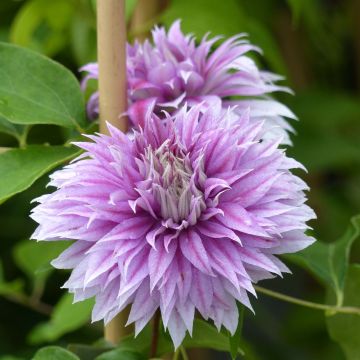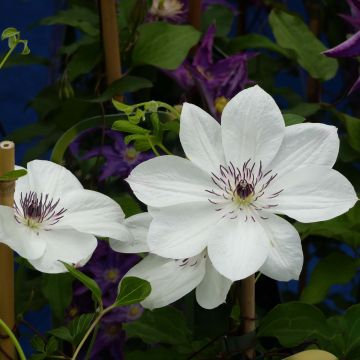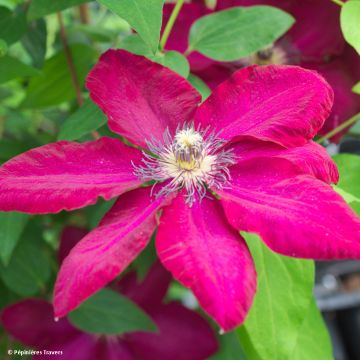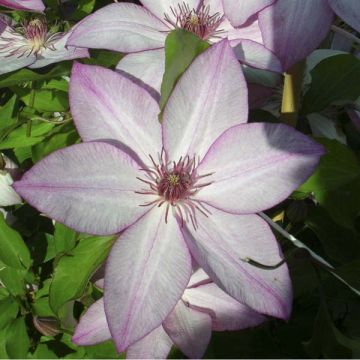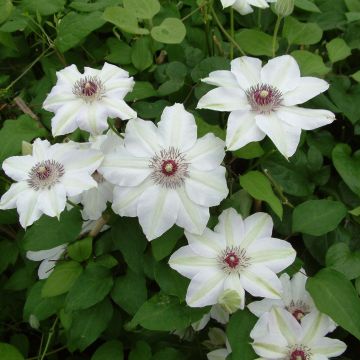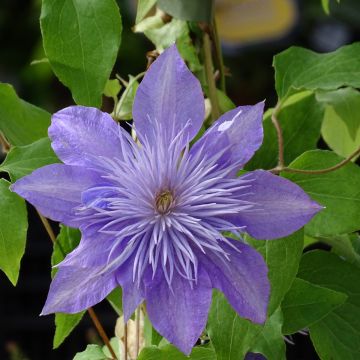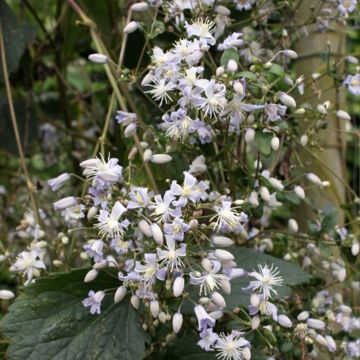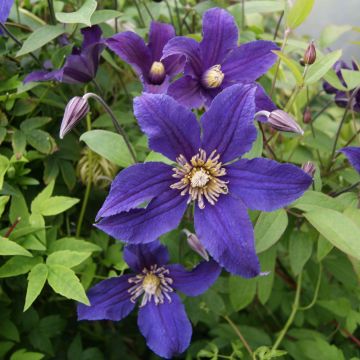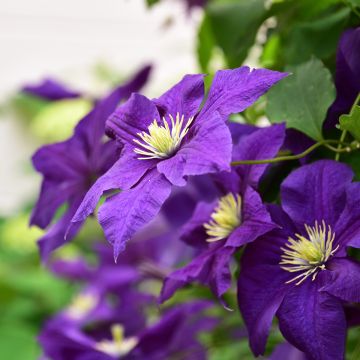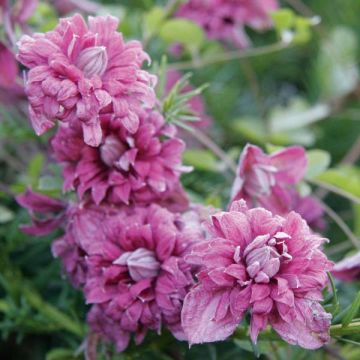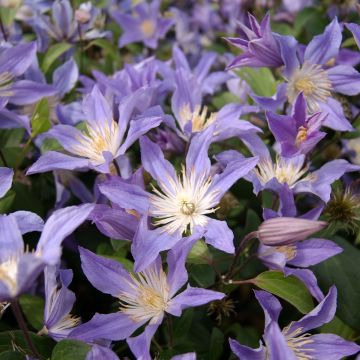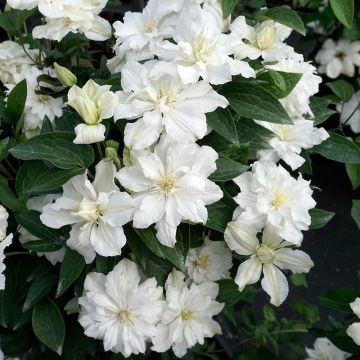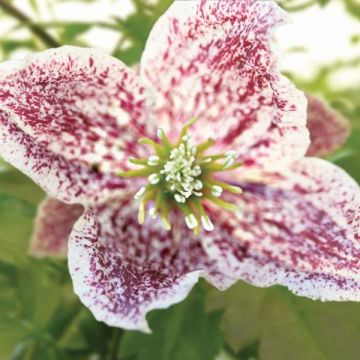Shipping country and language
Your country of residence may be:
Your country of residence is:
For a better user experience on our website, you can select:
Your shipping country:
Andorra
Austria
Belgium
Bulgaria
Canada
Chile
Croatia
Cyprus
Czechia
Denmark
Estonia
Finland
France
Germany
Greece
Hungary
Iceland
Ireland
Italy
Latvia
Lithuania
Luxembourg
Malta
Monaco
Netherlands
Poland
Portugal
Romania
Slovakia
Slovenia
Spain
Sweden
Switzerland
United Kingdom
We only deliver seed and bulb products to your country. If you add other products to your basket, they cannot be shipped.
Language:
French
German
Spanish
English
My Account
Hello
My wish lists
Plantfit
Log in / Register
Existing customer?
New customer?
Create an account to track your orders, access our customer service and, if you wish, make the most of our upcoming offers.
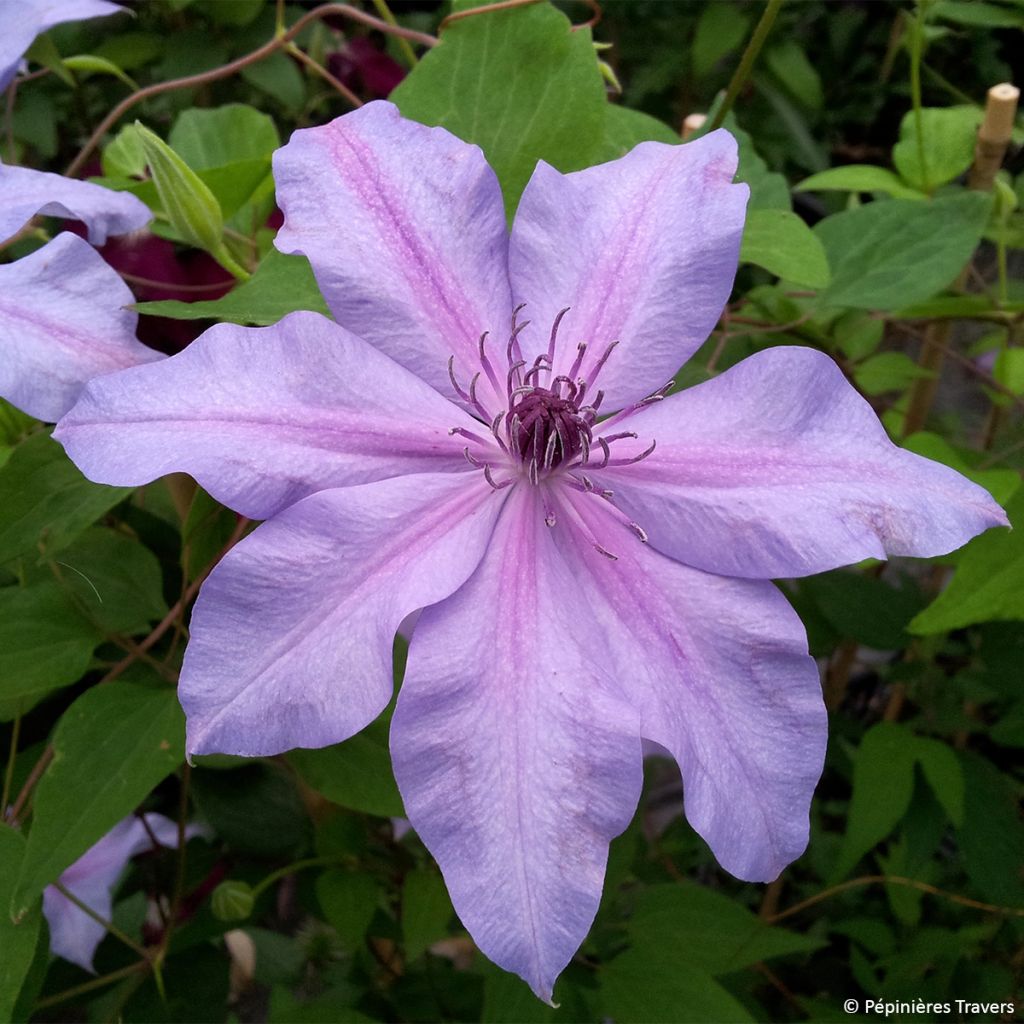

Clematis Moonfleet
Clematis Moonfleet
Clematis patens Moonflet Evipo046
Early Large-flowered Clematis
Why not try an alternative variety in stock?
View all →Order in the next for dispatch today!
Dispatch by letter from €3.90.
Delivery charge from €5.90 Oversize package delivery charge from €6.90.
More information
This item is not available in your country.
Schedule delivery date,
and select date in basket
This plant carries a 6 months recovery warranty
More information
We guarantee the quality of our plants for a full growing cycle, and will replace at our expense any plant that fails to recover under normal climatic and planting conditions.
From €5.90 for pickup delivery and €6.90 for home delivery
Express home delivery from €8.90.
Does this plant fit my garden?
Set up your Plantfit profile →
Description
Clematis Moonfleet is a variety of clematis with large flowers in a delightful range of colours evolving from bluish mauve to soft lilac pink, in perfect harmony with a cluster of almost violet stamens. These large corollas bloom from the bottom to the top of the plant, first in late spring, and then again in late summer, creating a beautiful gradient of colours. Its moderate growth is suitable for gardens of all sizes, as well as container cultivation.
The Clematis genus belongs to the ranunculaceae family. 'Moonfleet' is a horticultural variety obtained in 2010 by Raymond Evison in England. It is derived from Clematis patens, a woody clematis native to low-altitude forests in the northern Japanese islands. It belongs to the group of clematis that bloom twice. The first flowering appears in spring on the previous year's shoots, then a second flowering occurs in late summer on the current year's shoots. It is a woody climbing perennial plant with short stems, reaching 2m (7ft) high and spreading to 1m². Every spring, numerous new shoots emerge from its base.
This clematis bears 15 to 18cm (6 to 7in) diameter flowers, with single blooms composed of 6 large wavy tepals, striped along the central vein and slightly overlapping. They start mauve lilac and turn pink. The flowers have a cluster of reddish-purple stamens. They can be solitary or grouped in clusters. The bright green leaves are sometimes single, sometimes trifoliate, and strongly veined. This clematis clings to a support or host plant through petioles transformed into tendrils. The deciduous leaves dry up and fall off in autumn.
Plant clematis alongside your climbing roses or vines to extend the flowering of your walls and pergolas until the end of summer. Let 'Moonfleet' climb with 'Little Mermaid' or 'Baby Charm', for example, in dwarf conifers, bamboo, or ornamental apple trees to bring life to their beautiful foliage twice a year. This genus is rich in diversity, with flowers of all colours, shapes, and sizes. Take advantage of their easy cultivation to give your garden a romantic and bohemian touch. 'Moonfleet', thanks to its modest stature, will be perfectly happy in a pot on a balcony or next to an entrance door.
Clematis Moonfleet in pictures
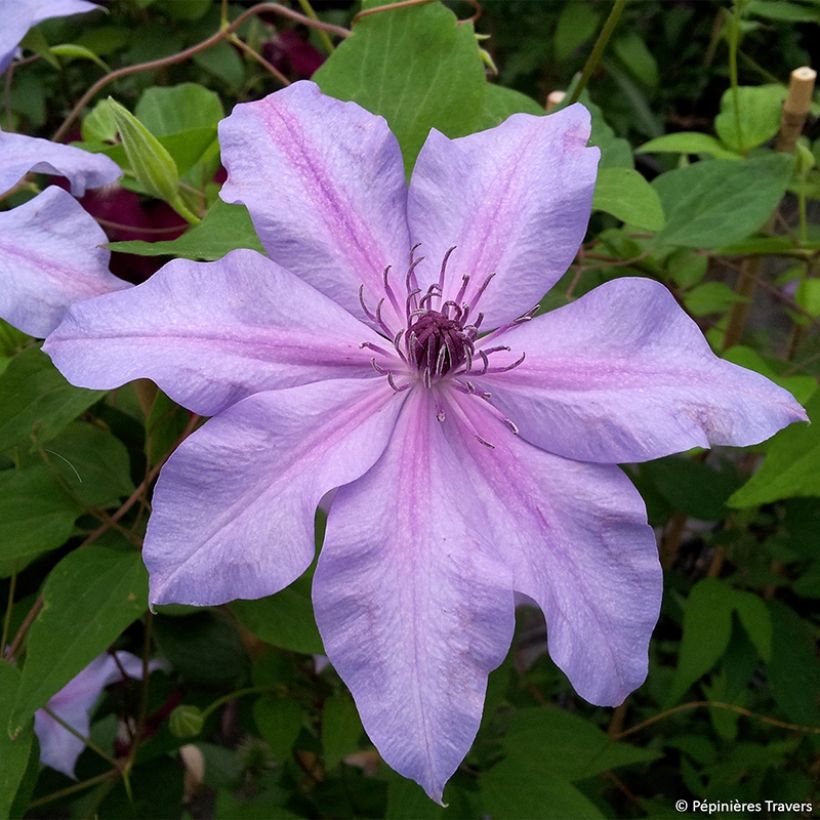

Plant habit
Flowering
Foliage
Botanical data
Clematis
patens
Moonflet Evipo046
Ranunculaceae
Early Large-flowered Clematis
Cultivar or hybrid
Other Clematis Patens
Planting and care
Plant Clematis 'Moonfleet' in the sun, in fertile, humus-rich, well-drained soil, shading the roots and the base of the stem (with a flat tile, for example). Herbaceous species prefer full sun and can wilt in excessively wet soil.
Plant your clematis by covering the root ball with 3 cm (1in) of soil, in a 20 cm (8in) area of well-dug soil, lightened with good compost. Water regularly during the first few weeks, but be careful of stagnant water which can cause collar rot. Cover the base of climbing clematis with a small mound of soil to reduce the risk of clematis wilt while encouraging vigorous new shoots from the crown. After planting, prune the stems of deciduous climbing clematis to about 30 cm (12in) above a healthy pair of buds. Mulch in February with garden compost or well-rotted manure, avoiding direct contact with the stems. Train the stems, without crushing them, until the plant can grip onto supports itself. Clematis also enjoy growing freely on neighbouring plants.
This variety flowers on the previous year's growth, so lightly prune it in March (a simple clean-up is sufficient). After the spring flowering, cut back half of all the branches to encourage strong branching and the development of new shoots that will produce a second flush of flowers during the summer season. It is possible to cut back the clematis up to 60 cm (24in) from the ground. Only prune severely to rejuvenate your clematis every 4 or 5 years. Voles and caterpillars can attack clematis and devour the stems. Aphids and greenhouse whiteflies are also potential pests.
Planting period
Intended location
Care
This item has not been reviewed yet - be the first to leave a review about it.
Clematis
Haven't found what you were looking for?
Hardiness is the lowest winter temperature a plant can endure without suffering serious damage or even dying. However, hardiness is affected by location (a sheltered area, such as a patio), protection (winter cover) and soil type (hardiness is improved by well-drained soil).

Photo Sharing Terms & Conditions
In order to encourage gardeners to interact and share their experiences, Promesse de fleurs offers various media enabling content to be uploaded onto its Site - in particular via the ‘Photo sharing’ module.
The User agrees to refrain from:
- Posting any content that is illegal, prejudicial, insulting, racist, inciteful to hatred, revisionist, contrary to public decency, that infringes on privacy or on the privacy rights of third parties, in particular the publicity rights of persons and goods, intellectual property rights, or the right to privacy.
- Submitting content on behalf of a third party;
- Impersonate the identity of a third party and/or publish any personal information about a third party;
In general, the User undertakes to refrain from any unethical behaviour.
All Content (in particular text, comments, files, images, photos, videos, creative works, etc.), which may be subject to property or intellectual property rights, image or other private rights, shall remain the property of the User, subject to the limited rights granted by the terms of the licence granted by Promesse de fleurs as stated below. Users are at liberty to publish or not to publish such Content on the Site, notably via the ‘Photo Sharing’ facility, and accept that this Content shall be made public and freely accessible, notably on the Internet.
Users further acknowledge, undertake to have ,and guarantee that they hold all necessary rights and permissions to publish such material on the Site, in particular with regard to the legislation in force pertaining to any privacy, property, intellectual property, image, or contractual rights, or rights of any other nature. By publishing such Content on the Site, Users acknowledge accepting full liability as publishers of the Content within the meaning of the law, and grant Promesse de fleurs, free of charge, an inclusive, worldwide licence for the said Content for the entire duration of its publication, including all reproduction, representation, up/downloading, displaying, performing, transmission, and storage rights.
Users also grant permission for their name to be linked to the Content and accept that this link may not always be made available.
By engaging in posting material, Users consent to their Content becoming automatically accessible on the Internet, in particular on other sites and/or blogs and/or web pages of the Promesse de fleurs site, including in particular social pages and the Promesse de fleurs catalogue.
Users may secure the removal of entrusted content free of charge by issuing a simple request via our contact form.
The flowering period indicated on our website applies to countries and regions located in USDA zone 8 (France, the United Kingdom, Ireland, the Netherlands, etc.)
It will vary according to where you live:
- In zones 9 to 10 (Italy, Spain, Greece, etc.), flowering will occur about 2 to 4 weeks earlier.
- In zones 6 to 7 (Germany, Poland, Slovenia, and lower mountainous regions), flowering will be delayed by 2 to 3 weeks.
- In zone 5 (Central Europe, Scandinavia), blooming will be delayed by 3 to 5 weeks.
In temperate climates, pruning of spring-flowering shrubs (forsythia, spireas, etc.) should be done just after flowering.
Pruning of summer-flowering shrubs (Indian Lilac, Perovskia, etc.) can be done in winter or spring.
In cold regions as well as with frost-sensitive plants, avoid pruning too early when severe frosts may still occur.
The planting period indicated on our website applies to countries and regions located in USDA zone 8 (France, United Kingdom, Ireland, Netherlands).
It will vary according to where you live:
- In Mediterranean zones (Marseille, Madrid, Milan, etc.), autumn and winter are the best planting periods.
- In continental zones (Strasbourg, Munich, Vienna, etc.), delay planting by 2 to 3 weeks in spring and bring it forward by 2 to 4 weeks in autumn.
- In mountainous regions (the Alps, Pyrenees, Carpathians, etc.), it is best to plant in late spring (May-June) or late summer (August-September).
The harvesting period indicated on our website applies to countries and regions in USDA zone 8 (France, England, Ireland, the Netherlands).
In colder areas (Scandinavia, Poland, Austria...) fruit and vegetable harvests are likely to be delayed by 3-4 weeks.
In warmer areas (Italy, Spain, Greece, etc.), harvesting will probably take place earlier, depending on weather conditions.
The sowing periods indicated on our website apply to countries and regions within USDA Zone 8 (France, UK, Ireland, Netherlands).
In colder areas (Scandinavia, Poland, Austria...), delay any outdoor sowing by 3-4 weeks, or sow under glass.
In warmer climes (Italy, Spain, Greece, etc.), bring outdoor sowing forward by a few weeks.
